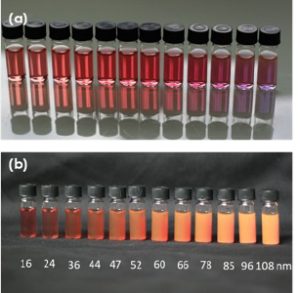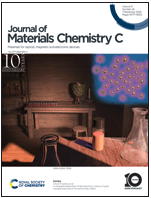Predicting plasmonic colors to create unexpected color pigments

Gold nanoparticles are well known for their ruby-red color. Researchers have long known that this color is due to the phenomenon of plasmon resonance. But this raises questions that go beyond the scientific circle, and opens the door to applications linked to the color industry. For example, can these nanoparticles be used like ordinary pigments to create inks? Or what range of colors can be produced from gold nanoparticles? Researchers from the group Physical chemistry and Dynamics of Surfaces at INSP demonstrate how to calculate the color of nanoparticles, and shed light on the phenomenon of bichromatism.
The result is featured on the cover of the Journal of Materials Chemistry C:

Caption
Photographs of the twelve samples of this study (a) in transmission and (b) in reflection. The vials contain spherical gold nanoparticles suspended in water. Their diameter increases from 16 nm to 108 nm, as shown in Fig.
Reference
“A complete explanation of the plasmonic colours of gold nanoparticles and of the bichromatic effect”
Pluchery, O; Prado, Y; Watkins, W
JOURNAL OF MATERIALS CHEMISTRY C 2023, 11, 15824-15832
Contact
Olivier Pluchery : olivier.pluchery(at)insp.jussieu.fr

